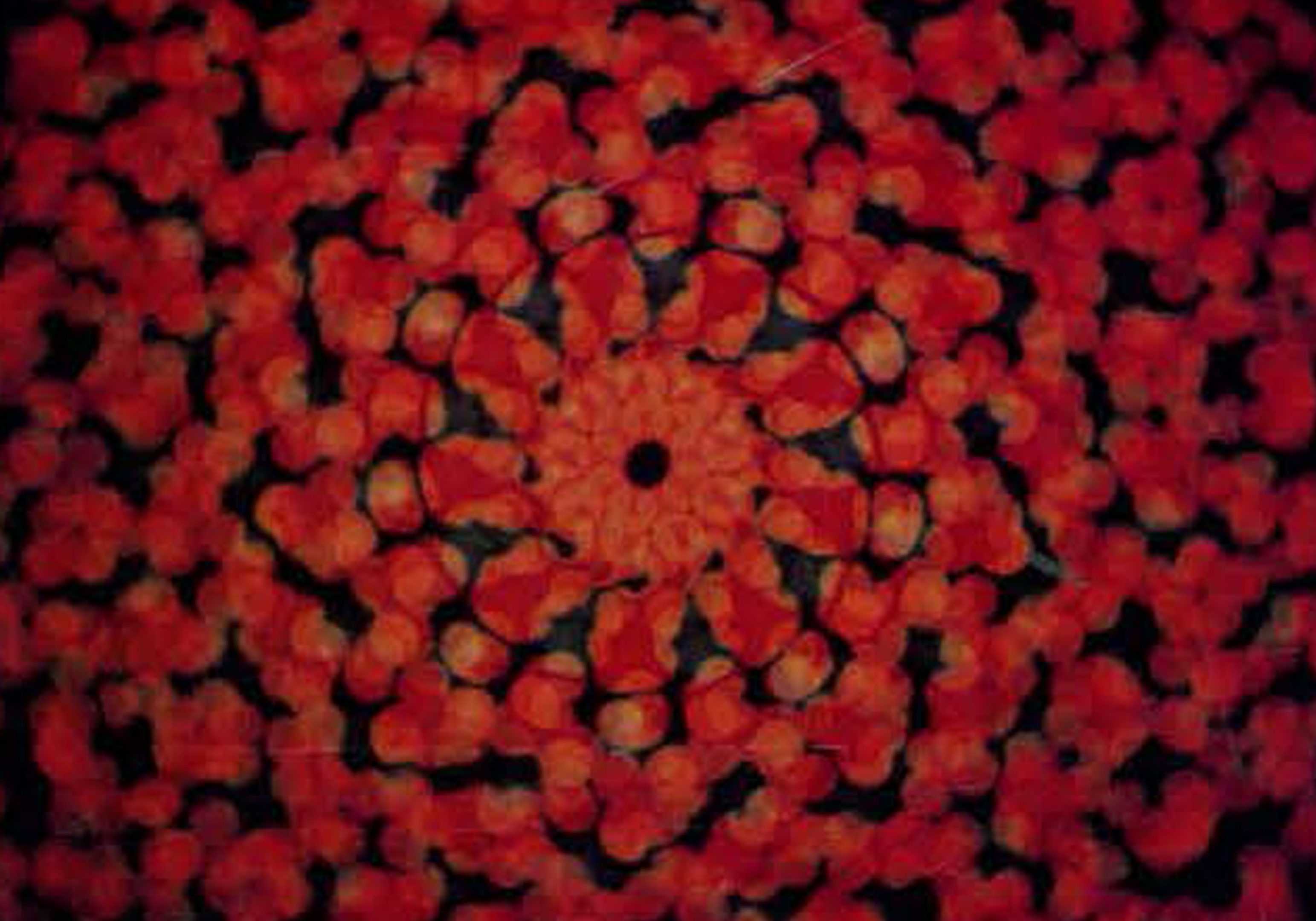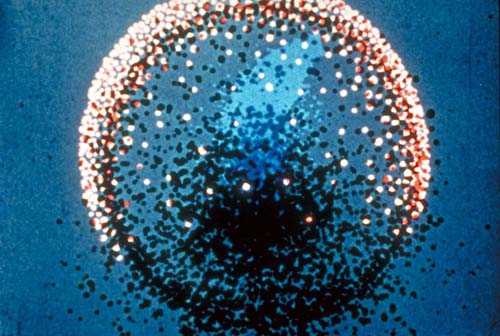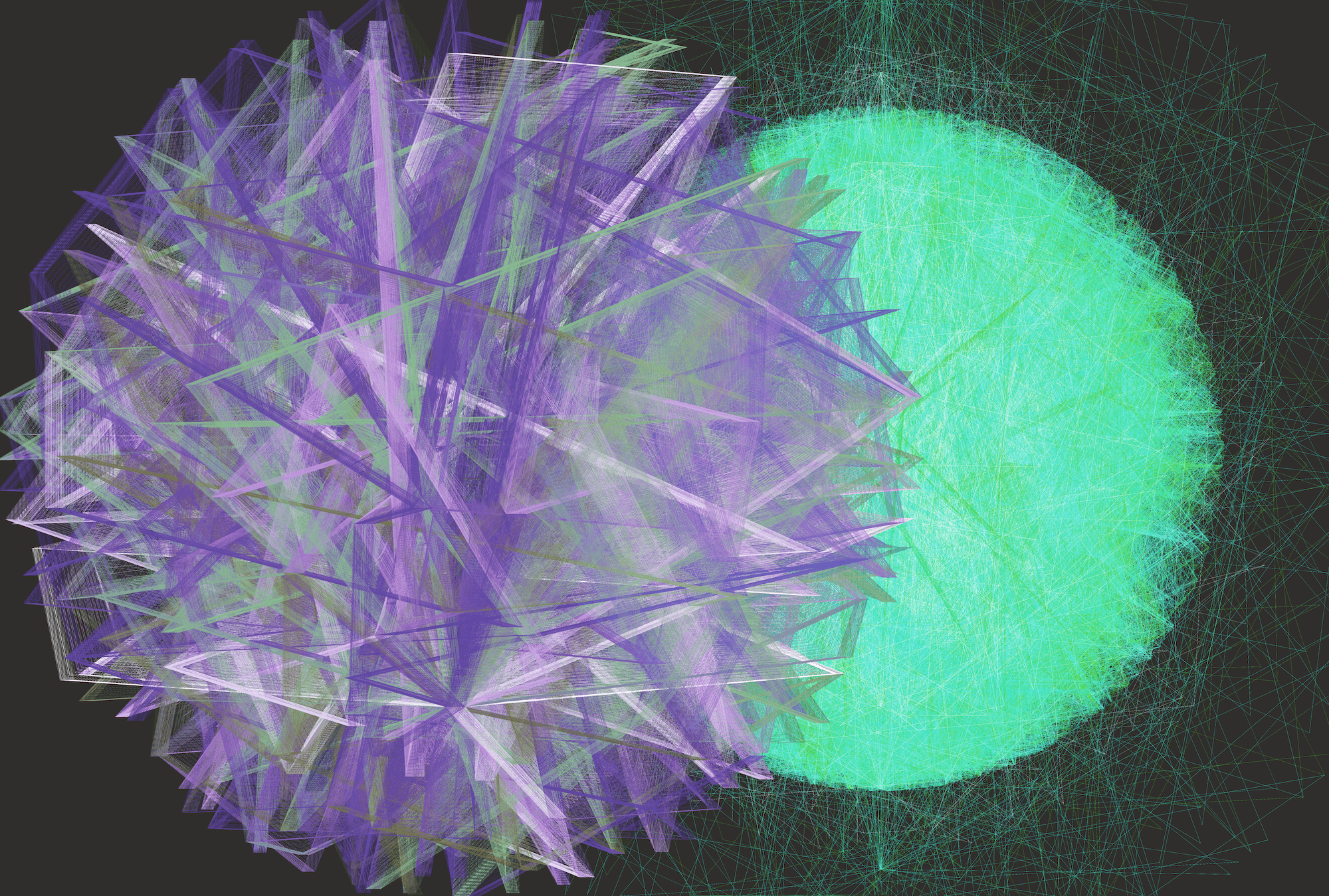The Inspiration
Beginning with the works of John Snr, and James Whitney, early pioneers of computer aided graphics and animation, I want to look at how the limitations they found in exploring these new frontiers shaped their work, and how they shaped the artifacts they produced - such as the films Lapis (James & John), Yantra (James) and Permutations (John) - images of which are featured on this site. What is striking about these - is not just the effects they were able to create with emerging non specific technology, such as the World War II M-5 anti-aircraft gun director (an analog computer), but how they exhibit unique and striking aesthetics which are very much products of that technology (and of course the artists intention).
As a computational artist in the early 21st Century, working with highly developed graphical pipelines, processes and raw computing power - it can seem that the opportunity to create art which is a product of it's limitations is at best much diminished, and at worst non-existent…
The Questions
Computational Art is well suited to abstract art, early art especially so, as the capabilities for achieving realism were (and some may say continue to be) many years away. Despite this, we can see that development of graphical technologies, as ultimately served the needs of it's masters in commercial film making, and the rise of Computer Gaming - where the ability to render realistic graphics is highly valued. In may ways for the computational artist this is a wondrous bounty - the technologies available to us in from watches, though smartphones and tablets, to the computers sat in our desks and server rooms is almost unfathomable. The new ARM based M1 Apple Silicon chip - has upto 8 GPU cores, with an approx 2.8 Teraflops1 (that's the ability to carry out one trillion floating point calculations per second), and it would hardly count has a true high end graphical processor.
On the other hand though - corralling all this power, comes at a cost - rendering processes are to many extents driven by hardware, like many computational solutions, graphics becomes a commodity with an approved manner in which graphics should be created. This project examines what we may have lost, how we might re-engage with those practices, and paradoxically, does the technology that has given us new formalised limitations present opportunities as well to create works in new ways inspired by the techniques of the past.
The Process
Throughout the first part of 2021, I will explore a number of topics in this area, researching practices old and new to see what we have done, whats has changed, and how we can reintroduce those ideas into our own personal practice. These will become short essays published on this site, as well as small experiments in code to prototype, and critique the ideas that arise in them - where video and source code will be shared as part of that work.
The Synthesis and the Artefact
The module requires the production of a a) multimedia computational research artefact, and b) a text of 1500-2000 words, or collection of shorter texts. This website represents the portfolio requirement.
At the time of writing, I have not yet decided on what format the artefact will take, I hope at this stage to produce an artwork which reflects, builds up and synthesizes from the ideas explored in my research - creating new ways of experiencing old techniques, in ways that whilst perhaps imaginable to the pioneers of computational art, would have been beyond the technology available at hand to them.



